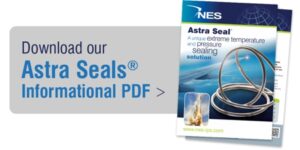Cryogenic Operations: The Importance of Choosing the Right Seals for Low-Temperature Applications
Cryogenic operations refer to applications functioning at extremely low temperatures, typically at or below -190°C. These applications often utilise substances like liquid nitrogen, refrigerants, and hydrocarbons with low freezing points to achieve the desired outcome. Selecting an appropriate cryogenic seal to securely contain these substances is crucial for successful operations.
Cryogenic Industries
NES proudly collaborates with businesses across diverse industries which use cryogenic processes as part of their operations. These include:
- Aerospace and defence
- Chemical processing
- Energy and power
- Food and beverage
- Pharmaceutical applications
In these types of operations, a cryogenic gasket is essential to ensure safe and reliable performance.
Why Are Specialist Cryogenic Seals Necessary?
Several factors make specialist seals a better choice than standard seals for low-temperature operations. These include:
- Protection of hazardous cryogenic fluids: Cryogenic liquids can be harmful, causing burns, asphyxiation, or toxicity. Some materials pose a risk of fire and explosion, making appropriate protection and containment vital.
- Conventional O-rings may fail: The working temperature of many applications may be too low for standard O-rings to function correctly. Extremely cold temperatures can cause some elastomers to reach a glass transition state (Tg), resulting in reduced flexibility and increased brittleness, leading to failure.
- Contraction must be accounted for: The natural expansion and contraction occurring as temperatures change can cause O-rings to become unseated, risking cracks, leaks, and failure.
- Cold set must be avoided: In applications where cryogenic operations coexist with higher temperature operations, using the wrong type of seal can lead to ‘cold set’, where stresses on the O-ring are unable to relax at low temperatures. This creates an unreliable seal, resulting in leakage and failure.
In cryogenic operations, choosing the right seal is critical. The choice depends on the operating temperature. For instance, neoprene and nitrile may fail at temperatures below -40°C, while silicone and fluorosilicone may fail by -100°C. Cryogenic operations often require even lower temperatures, so for applications functioning at extreme lows, consult our team about the Astra Seal®.
Our experts can provide guidance on the most suitable seal for your cryogenic applications. Reach out to the NES team today, and we will be delighted to share our expertise with you.

